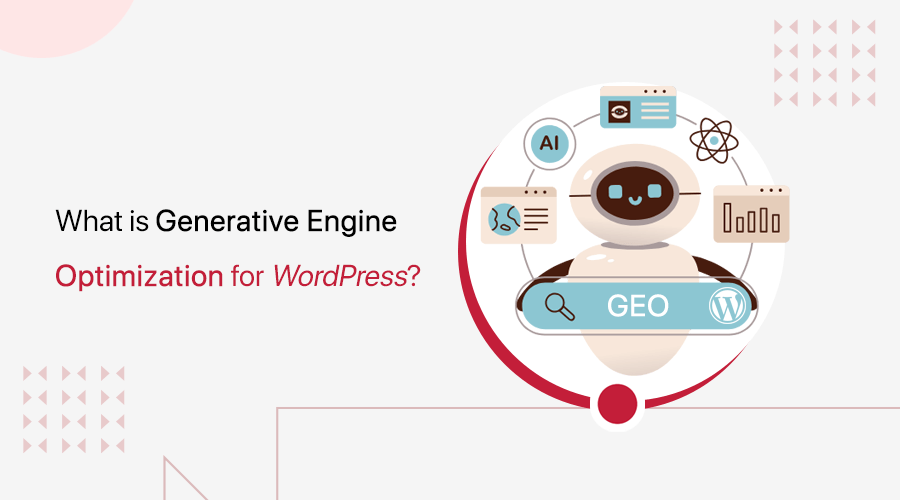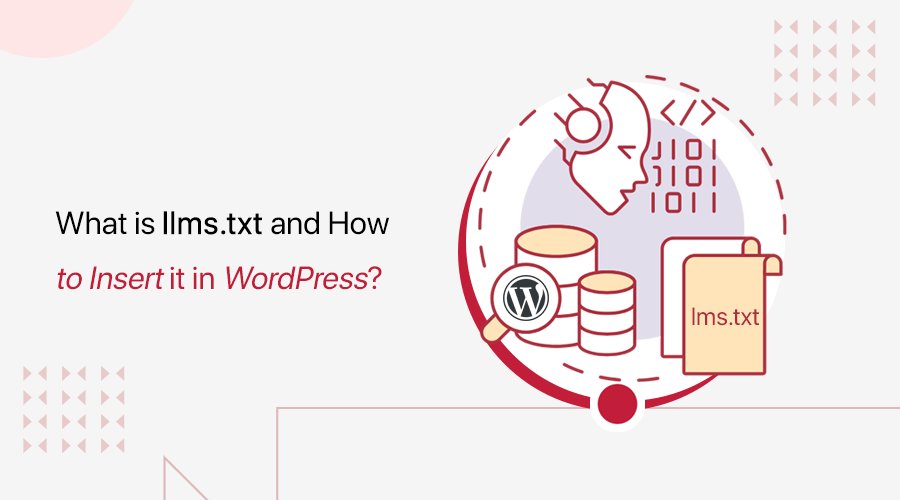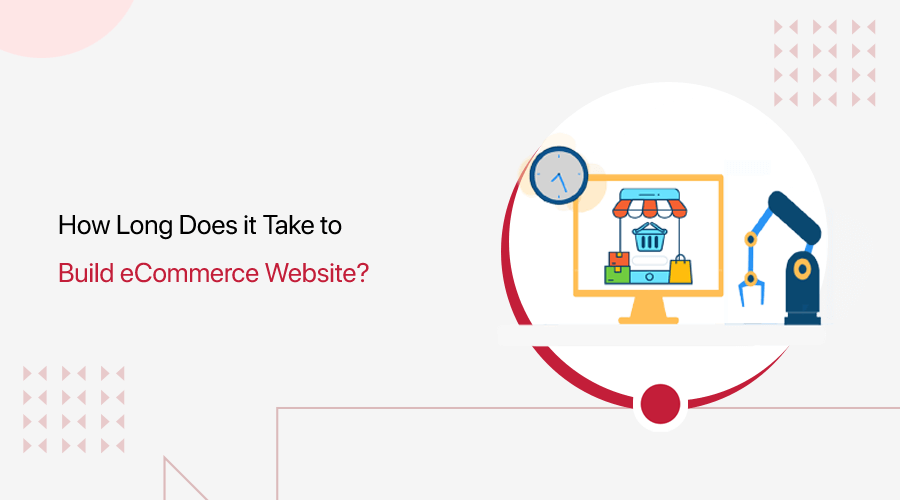
Are you interested in learning how long does it take to build an eCommerce website? Or are you curious how long it typically takes to set up an online store? If yes, then here we go!
It goes without saying that it’s pretty difficult to estimate the precise amount of time required to build an eCommerce website. Due to the fact that it varies based on a number of aspects. Like the nature of your eCommerce website, the method used to develop it, the budget allocated, and many more.
Nevertheless, depending on the approach you take to create your eCommerce website, we can estimate the duration. Some online stores with 10 product pages can take a few hours or days. Meanwhile, it may also take weeks or months if you want it more sophisticated and purpose-driven.
In this article, we’ll assist you in estimating the time duration you might require to build an eCommerce website. So, go through the various variables and methods stated to know about their anticipated timespan.
Let’s get rolling!
A) Understanding the Need for your eCommerce Website
It’s very obvious that not everyone has the same expertise and background in website development. Besides, there are many other factors that determine how long does it take to build an eCommerce website. Such as the objective of your eCommerce website, methods applied, and so much more.
Indeed, it’s really difficult to estimate the precise amount of time needed to build an eCommerce website. Nonetheless, we can make an approximate time forecast so that we can prepare and work accordingly.
Therefore, in this section, we’ll help you understand the exact need for your eCommerce website. These are the key elements that affect the time needed to build an eCommerce website. So, let’s explore them:
1. Insight into Different Types of eCommerce Businesses
Every eCommerce business is different despite the fact that they appear to perform certain identical activities. Therefore, the first step in developing an eCommerce website is deciding what kind of eCommerce business you want to launch.

Let’s now explore various eCommerce business concepts. These concepts are based on the functions they carry out and nearly every business-to-consumer transaction.
- Business-to-Consumer (B2C): It’s such type of eCommerce business where a business transaction is carried out between a business and a consumer. For instance, you buy a pair of shoes from an online retailer.
- Business-to-Business (B2B): Here, one online store sells its products or services to another online store business. For instance, if purchase those pairs of shoes from an eCommerce wholesaler for your online shop.
- Consumer-to-Consumer (C2C): In this approach, one consumer sells something whether a product or service to another consumer. Such as selling your old laptop to other laptop users on sites like Amazon.
- Consumer-to-Business (C2B): In this scenario, a customer sells a company a good or service. For instance, a content marketer sells their SEO-optimized content for a business.
Therefore, depending upon which eCommerce business concepts you wish to follow, it can take a week or some months to build it.
2. Complexity Level of your eCommerce Website
Secondly, you should plan out the style and features of your eCommerce website before you launch it. In fact, design and functionality are quite crucial particularly for eCommerce websites to get more leads and sales.
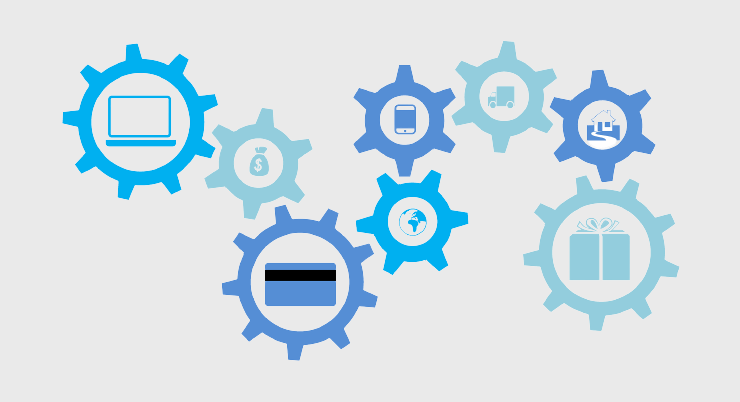
Consequently, the time it takes to create a site is also influenced by how simple or sophisticated its functional design is. Let’s say you choose to design a straightforward online store with few product pages. In such cases, you can quickly create your store within a minimum of a few couples of days.
However, if your eCommerce site needs a lot of functionality, such as pop-ups, shipping options, a fully-functional dashboard, mega menus, etc. Then, it can take a longer period of time.
3. Site Building Approach
There are various site-building approaches that you can follow for your eCommerce website. Depending on which strategy you choose for your eCommerce site strongly determines the time it takes to develop your online store.
Moreover, these approaches take into account people’s diverse backgrounds and skills. So, the major eCommerce site building approaches that we’ll be emphasizing shortly are:
| With WordPress.org and WooCommerce | Using eCommerce Platforms | Hiring an Agency | Via Coding |
| Perfect approach if you want to build a fully-functional eCommerce website on your own. | One of the easiest approaches to building an online store yourself. | Ideal if you have a sound financial plan. | Best for proficient web developers. |
4. What Kind of Products Do You Want to Sell via an eCommerce Website?
Before you start building your eCommerce website, you should figure out what kind of products you want to sell it.
So, let’s discuss some of the common product categories that are offered for sale on eCommerce websites.
- Physical Products: Products that you can physically ship to clients are physical products. That includes apparel, food, appliances, and so on.
- Digital Products: Goods and Services that you can download for usage or licensed for consumption are digital products. E.g. Software, Templates, Plugins, Themes, etc.
- Subscriptions: Anything that calls for frequent, recurrent purchases of a product until you decide to stop. For instance, Netflix, Online Courses, etc.
- Dropshipping: These are the products that a third party manufactures and sends to the customer.
- Services: Any combination of talents that one can offer to others in exchange for payment in the form of services. Such as video editing services, freelancing, and more.
Depending on the complexity of the products you want to sell, it may take more time to complete your eCommerce website fully. For instance, it goes without saying that it takes at least a month when the website contains numerous product pages and other features with a sophisticated structure.
Or perhaps, say you spend more time perfecting your offerings. This also results in a slowdown in the development of your eCommerce website.
5. Budget Allocation
Last but not least, the length of time it may take to create a website depends on the project budget for developing your eCommerce site. If you have a large budget, you can hire someone to build your website. Most probably, they complete it within your standard time frame.

Nevertheless, if your needed features are complicated, then it costs more to build your online store. And significantly, the pace at which the eCommerce site develops is also slowed.
Again, if the budget is tight, then you can also create a basic internet store yourself in less time. Such as using various eCommerce platforms which we’ll discuss eventually.
Having said that, let’s move on to the following portion.
B) How Long Does it Take to Build an eCommerce Website?
We’ve developed 4 various scenarios to determine how long it takes to build an eCommerce website. In fact, they are based on different approaches to creating an eCommerce website.
Therefore, browse them and choose your favorite. As a consequence, find out how long it takes to build an eCommerce website in that particular method or situation.
Check them out now.
Method 1: Building an eCommerce Website Using WordPress.org and WooCommerce
Over 43% of websites utilize the content management system (CMS) WordPress. You can host your website using this free and open-source software on any web host of your choice.
Additionally, a WordPress plugin is an application that expands a WordPress site’s functionality. To put it more simply, you add a plugin to a WordPress site to increase its functionality.
Now here comes WooCommerce. It’s a strong WordPress plugin that can transform your website into a fully functional online store where you can sell anything.
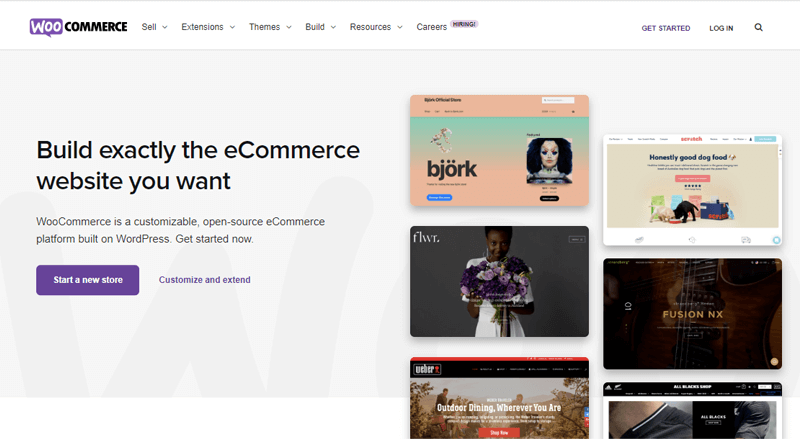
With only a few clicks, you can easily install the plugin and customize your store’s appearance store design. You can integrate functions like product listing, payment, shipping, user login, search, filter, order processing, etc. with WooCommerce into your website.
However, keep in mind that WordPress is a self-hosted platform. So you will be responsible for managing your WooCommerce store’s domain and hosting on your own.
You can check out our article on top hosting platforms to find out the best hosting options for your eCommerce store.
Synopsis of Steps
The steps for building an eCommerce website using WordPress.org and WooCommerce are listed below.
Step 1: Decide on a web hosting solution for WordPress websites. You can also select such hosting packages designed specifically for e-commerce websites.
Step 2: Open an account with the hosting company and buy a plan.
Step 3: If the host doesn’t provide a suitable domain name, then purchase one from a domain registrar.
Step 4: Install WordPress if it isn’t already installed.
Step 5: Download the WooCommerce plugin from the repository on WordPress.org.
Step 6: Pick an eCommerce theme that is appropriate for your online shop.
Step 7: Individualize the website’s layout.
Step 8: Add the Products.
Step 9: To access extra capabilities, install and use the various WooCommerce extension plugins.
Step 10: Examine the layout and features of your online store.
Step 11: Publish your eCommerce website.
Step 12: Execute effective marketing to scale up your eCommerce.
Pros & Cons
Now, let’s summarize the benefits and drawbacks of building an eCommerce website with WordPress and WooCommerce.
Pros:
- You can choose the web host based particularly on your eCommerce website needs.
- WooCommerce is an open-source plugin that is free to download, use, and alter.
- You’ll have complete freedom while designing your store.
- Moreover, WooCommerce has a big user base. As a result, you can always reach out to people and check out many blog articles, tutorials, etc for help.
- As a plugin, WooCommerce is secure by default. Also, it enforces implementing security protocols like SSL to your site.
Cons:
- For newcomers, there may be a little learning curve to building a fully functional eCommerce website.
- You’ve to purchase a domain and hosting for your eCommerce website independently.
- Installing extensions can make you feel a bit time-consuming.
Time Duration
Delightfully, you can quickly create a secure online store with the help of the ideal WordPress and WooCommerce combination. You are free to select your favorite web hosting provider when utilizing WordPress.org.
Though there exist some technological errands, at the same time, you’ve got more control over your eCommerce site.
Therefore, if you use WordPress.org, your website can actually be set up in a few days. And that might be as little as four to five days if you are selling a single product and have enough knowledge of the product.
In the interim, you can quickly install the WooCommerce plugin from the WordPress.org repository. In fact, WooCommerce’s setup procedure can be completed in as little as 30 minutes.
Additionally, the time may vary depending on whether you select an eCommerce template for the site design. Your online store site development could take up to 2 weeks if you don’t use a template.
Method 2: Building a Website Using an eCommerce Platform
eCommerce platforms are one such solution that enables you to create an online store quickly and easily and sell goods right away. You can effortlessly build, manage and expand your online store in no time.
Due to the fact that it gives you everything you need to track orders, merchandise, shipping, and more.
Thankfully, there are many eCommerce platforms available to help you out in building your eCommerce websites. Also, did you know that most eCommerce platforms have free site demos that you can try before settling on them?

Consequently, you can choose the ideal eCommerce website builder based on your requirements and objectives. However, you must set a budget and select the finest site builder that you find simple to use.
Making it easier for you, here we’ve listed the top eCommerce platforms for you. So, check it out now.
Top eCommerce Platforms
Some of the finest and top eCommerce platforms out there are as follows:
i) Shopify
With over 2.1 million members and 1 million active businesses, Shopify is a well-known eCommerce platform. You can choose from more than 70+ expertly designed and configurable themes for your store with Shopify.

Additionally, it helps you to sell your goods on many social media platforms, including Facebook, Instagram, etc. Besides that, it incorporates third-party payment processors like PayPal, Amazon Pay, Stripe, and others.
Pricing:
Gladly, this premium platform is free to test for 14 days. The builder’s starting fee is $29 per month. When utilizing an external payment gateway, the transaction costs accumulate.
ii) Wix eCommerce
One of the most popular website builders Wix has its own eCommerce solution, which is popularly known as Wix eCommerce. Using this straightforward yet effective drag-and-drop design tool, you can set up your online store in no time.

And the best part is, that Wix does not demand any transaction fees. You must however continue to pay the standard rates established by the different payment providers.
Moreover, Wix is a fully-hosted platform, like Shopify. So you won’t have to bother about hosting. Additionally, it offers a vast selection of themes from which to choose for showcasing your products and services.
Pricing:
The Wix eCommerce plans are trialable for 14 days. The cost of the business/eCommerce plans starts at $17 per month.
iii) BigCommerce
BigCommerce is a strong eCommerce platform with a wide selection of tools for setting up an online store. For hassle-free creation of your eCommerce store, you receive a powerful visual drag-and-drop website builder.

Moreover, it accepts payments in more than a hundred different currencies. Also, it permits local payments through a variety of gateways, including Apple Pay, PayPal, Amazon Pay, and others.
Pricing:
The starting price of BigCommerce for Standard plans is $29.95/month. You get features like an online storefront, gift cards, integrated payment gateways, etc.
iv) PrestaShop
PrestaShop is an open-source eCommerce platform that offers many capabilities for setting up and maintaining an online store. Furthermore, since it’s a self-hosted platform, you’ll need to manage hosting, a domain name, and an SSL certificate.

Additionally, PrestaShop features a template marketplace called PrestaShop Templates. You can get all the paid and free templates needed to produce stunning designs. Along with that, it has a PrestaShop Module Store with a ton of PrestaShop modules to give your store additional functionality.
Pricing:
Since PrestaShop is open-source software, it’s available to you free of cost. Nevertheless, the cost of templates and modules varies depending on which one you choose.
v) Squarespace
Squarespace is one of the best SaaS (Software as a Service) platforms with a simple method for developing and hosting eCommerce sites. It offers a straightforward drag-and-drop interface with a variety of gorgeous templates to pick from.

Moreover, if you sell services, then it enables your customers to check availability and make appointments right on your website. Additionally, it has fantastic social media platforms and on-brand email marketing. This makes it simple to maintain customers and grow audiences.
Pricing:
Squarespace has an initial eCommerce Business plan that starts with $23/month along with a 3% transaction fee.
With that, let’s check out the synopsis of how you can build an eCommerce website using the above-mentioned eCommerce platforms.
Synopsis of Steps
The steps for building an eCommerce website using various eCommerce platforms are listed below.
Step 1: Choose the best eCommerce platform or site builder at your convenience.
Step 2: Pick a plan that works for you and create an account.
Step 3: Purchase a domain from a registrar in case the eCommerce site builder allows you to add a custom domain.
Step 4: Decide the eCommerce theme or design you desire.
Step 5: Modify the template to reflect your business and personal taste.
Step 6: Include the website’s products and content.
Step 7: For more functionality, install and use other extension tools or programs.
Step 8: Review and evaluate the functionality and design of your website.
Step 9: Make your eCommerce website live by publishing it.
Step 10: Execute effective marketing.
Pros & Cons
Now, let’s summarize the benefits and drawbacks of building an eCommerce website with various eCommerce platforms.
Pros:
- It’s one of the most ideal techniques for beginners to build an eCommerce website that’s basic and uncomplicated.
- Rapidly create your online store even in a minimum of one day.
- Perfect for people on a tight budget. Considering that they provide monthly service plans.
- Contains editable templates with a range of choices to match your business brand.
Cons:
- Some eCommerce platforms include transaction fees and other unstated expenses. This adds up to the total cost in actuality.
- A website’s performance may suffer if you add too many tools and features.
- You may not be able to change the website template with all website builders.
Time Duration
As earlier mentioned, one of the quickest approaches to building an eCommerce website is by using an eCommerce platform. Also, if you’re happy with its own platform, you won’t need to search for a web host.
Ultimately, we can state that using a hosted eCommerce site builder such as Shopify, you can build your online store in a couple of days.
Best part is that if you have a good strategic plan in place, you can craft your online store in less than a week with the right amount of work. Sounds cool, right?
Nevertheless, the time duration also relies on whether you’re crafting your online store from the ground up or using store templates. So, just in case you’re using any template and working to bring all the new flavors to your store. Then it can take a few weeks.
Method 3: Creating an eCommerce Website Via Agency or Web Developer
Hiring an agency or web developer is another method to build your eCommerce website. So, when you hire a web development company, they’re totally responsible for managing your online store project. That also from the beginning to end.
All you need to do is say the exact requirements that you want in your eCommerce website. Then, take a backseat and watch the web professionals do their job in accordance with your requirements.

In fact, talking about the time frame, you can schedule and predict the timeline for the site’s completion. Needless to say, they might charge you more if you require your eCommerce website as immediately as possible.
Additionally, if you’re high on finances and want a fully-functional and professional-looking eCommerce website, then this is the way to go.
Synopsis of Steps
The steps for building an eCommerce website using via agency or web developer are listed below.
Step 1: Look around for the ideal agency that can exactly build the kind of eCommerce website that you’re looking for.
Step 2: Make a brief description of your eCommerce site, including any specifications.
Step 3: Call a meeting with the web developers to present your needs and go over the budget.
Step 4: Give your product descriptions and all the required information to your preferred agency so they may have complete control.
Step 5: Check the updates or drafts of your online store frequently. And give a review of the necessary changes as needed.
Step 6: Accept your eCommerce site’s layout and content after you’re pleased.
Step 7: Put your eCommerce website online.
Step 8: Implement upkeep and marketing efforts to scale up your eCommerce business.
Pros & Cons
Now, let’s summarize the benefits and drawbacks of building an eCommerce website via an Agency or Web Developer.
Pros:
- You don’t have to sweat or worry about building a website.
- Receive a fully-functional eCommerce website that represents your business brand expertly and professionally.
- You’ll receive guidance on enhancing the website’s features from experts.
- It’s unnecessary to invest your time mastering technical and complicated things.
Cons:
- It’s one of the most costly approaches to building an eCommerce website in comparison to other methods.
- So as to make the eCommerce site match your needs, you’ve to time and again provide comments and feedback. Consequently, this adds up both your time and cost.
Time Duration
As mentioned before, your online store requirements determine how long it takes to build your eCommerce website.
Precisely, it could take up to 6 weeks to create a straightforward yet sophisticated eCommerce website. Or, if your eCommerce site demands a lot of work, then it may even take from 3 to 5 months.
Also, the need for the multiple amendments necessary for your online store project can elongate the time frame.
Moreover, the volume of the projects that your hired agency or web developer has a significant impact. If they got fewer projects, then there is a high possibility of completing your eCommerce site quicker and vice versa.
Method 4: Creating an eCommerce Website from the Ground Up Using Coding
Last but not least, you can also create your eCommerce website from the ground up using coding. This method is one of the best approaches for all web developers with knowledge and experience in website building.
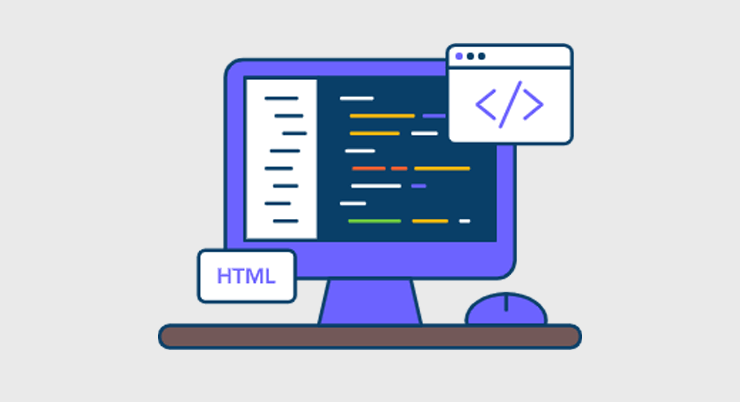
If you’re one of them, then you must be quite familiar with coding languages. Such as HTML, CSS, JavaScript, Python, Java,.NET, PHP, etc. You can craft a dynamic eCommerce website applying these codings. In fact, if you feel at ease, then you can completely go ahead to redesign your eCommerce website from scratch.
Nevertheless, you’ve to learn programming and coding languages if you’re not into techs. So, this can also elongate your time duration to build an eCommerce website.
Synopsis of Steps
The steps for building an eCommerce website from the ground up using coding are listed below.
Step 1: Craft a proper strategic framework for your required eCommerce website.
Step 2: Develop your eCommerce site designs and gather feedback and comments from other fellow web developers.
Step 3: Start creating the necessary product images, descriptions, and all the required information.
Step 4: Make your software and programming language selections.
Step 5: Master the software and programming language of your choice.
Step 6: Start developing the UI/UX for your eCommerce website.
Step 7: Additionally, design your eCommerce website from the backend.
Step 8: Take frequent performance tests, evaluate user experience with a few people, and make the necessary reviews.
Step 9: Upon completion, launch your eCommerce website.
Pros & Cons
Now, let’s summarize the benefits and drawbacks of building an eCommerce website from the ground up using coding.
Pros:
- Complete flexibility to independently create an eCommerce website the way you like.
- If you are a tech specialist, then it won’t cost you much.
- Before going live, you can fully test and edit your eCommerce website.
Cons:
- Setting up your eCommerce website takes the longest time duration in comparison.
- Only for experienced web developers.
- It has a challenging learning curve for average folks.
- Numerous tests and modifications are necessary to fix all of the faults.
Time Duration
Building an eCommerce website for a skilled web developer is a piece of cake. Therefore, depending on what your online store project requires, it can take a few weeks to a few months.
However, it’s completely the reverse for a novice who wants to learn how to program and create an online retail website. Given that it may take a few weeks to several years.
As a result, it’s one of the time-consuming and difficult ways to create a website.
C) Summary
To conclude, the approximate time duration required to build an eCommerce website using any of the above-mentioned methods are:
| Methods | Description | Time Duration |
| Method 1 | Using WordPress.org and WooCommerce | Few Days to Few Weeks |
| Method 2 | Using an eCommerce Platform | Couple of Days to 2 Weeks |
| Method 3 | Via Agency or Web Developer | 6 Weeks to Several Months |
| Method 4 | Ground Up Using Coding | Few Weeks to a Few Months to a Year |
With that, you might have made your decision after looking at each option and its projected time.
Nevertheless, if we have to suggest one of the approaches, then we’d go for using WordPress.org and WooCommerce. The powerful combination of these 2 versatile platforms can do wonders in the development of your eCommerce store.
Do check our article on the best WooCommerce website examples for inspiration as you begin creating your online store.
Meanwhile, you can also go for various eCommerce platforms to build an eCommerce website. It’s also another good approach that helps you create your online store within a short period of time.
You might also want to check out the sample timeline for building an eCommerce website at the table below:
| Function Description | Estimated Days |
| Strategic Research & Planning | 9 Days (1+ Week) |
| Website Design & Review | 6 Days |
| Website Development | 11 Days (1.5 Weeks) |
| Review & Revision | 3 Days |
| Migration & Launch | 1 Day |
| Total Number of Days | 30 Days |
However, do note that the estimated days are subject to change depending upon how sophisticated eCommerce website you want to build.
With that, are you planning to create an eCommerce website on your own? Then, check our comprehensive article on how to make a website to get a rigorous idea.
Conclusion
And that’s a wrap! We’ve done our best to estimate the time duration for how long it takes to build an eCommerce website.
As mentioned earlier, the projected time duration fluctuates based on a number of factors. And, things may not work out as planned. However, knowing how long it takes to build an eCommerce website can definitely help you get started.
If you’ve any kind of questions or confusion, then do let us know in the comment section below. We are delighted to help you out.
Furthermore, you might want to check out our other articles. Such as the best headless eCommerce platforms and best multi-vendor eCommerce platforms.
Do go forward to share this article on how long it takes to build an eCommerce website with your friends and family.
Last but not least, follow us on Facebook and Twitter to keep up with our frequent updates.
